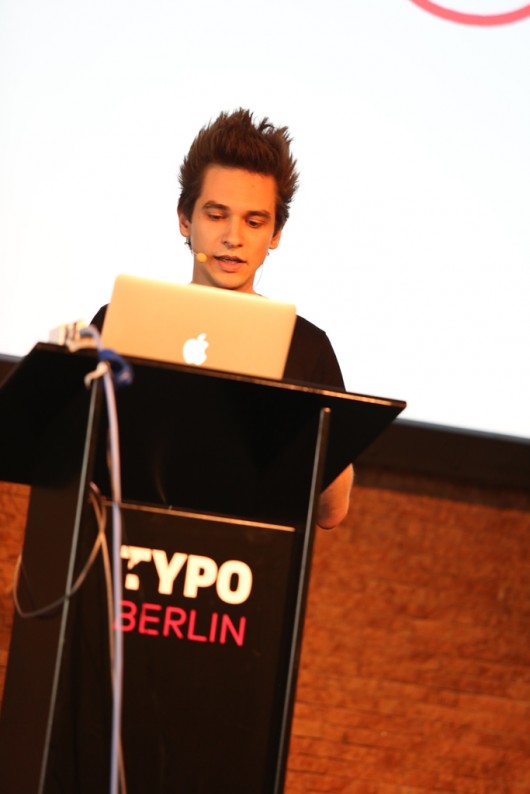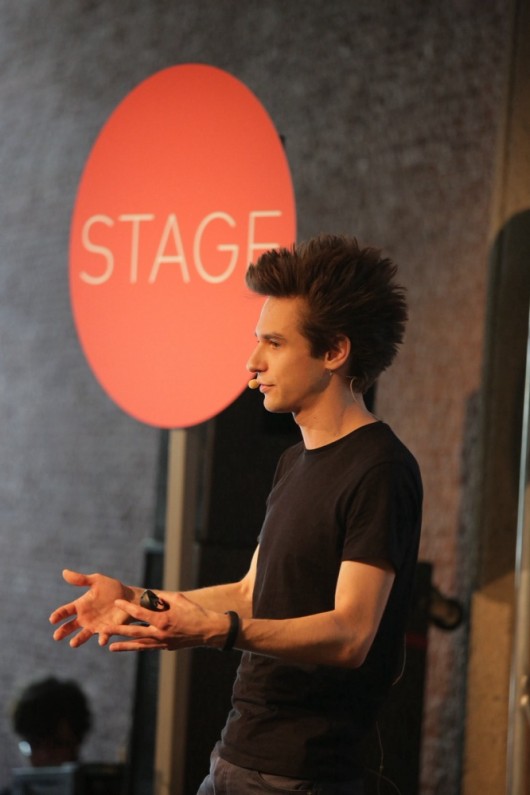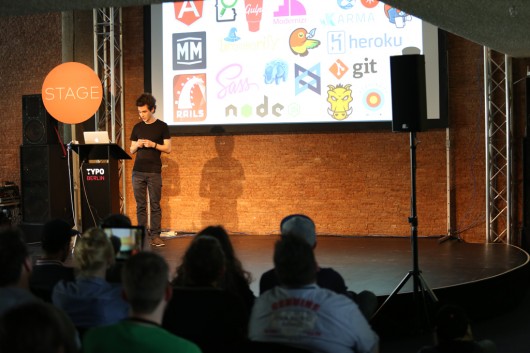Spectacular trademark hair in place and armed with a few diagrammatic but of course well designed and considered slides in tow, he very succinctly talked through the whys, whats, hows and differences between the ‘waterfall’ and ‘agile’ processes. He spoke about the changing nature of the digital landscape, where back in the day we only had to worry about one or maybe two devices, to now – the current state of play, which sees a plethora of devices, platforms, apps, updates and writing systems making for one giant global web of complexity. It has become in a sense – one hot digital mess.
The view is that the traditional waterfall and straight line design-to-content-to-implementation-to-final product approach lacks freedom and flexibility, nor does it allow for volume or (frequent) change in the lifespan of a product. This pre-determined beginning-to-end, pass-the-baton way of working also inhibits communication and collaboration across disciplines. Cracks often appear as projects start falling by the wayside relative to execution and time as a consequence of set expectations. “That’s not what the mock up looked like … ”, “why is it taking so long?” and “why isn’t this working?” ring too common as feedback threads, and which at times, is fair enough, because the final product often resembles very little of the approved mock-up that was established in earlier design phases.
Agile flips waterfall on its head. Disciplines are integrated and everyone has a seat at the table, including the client. Design, content and implementation are no longer linear defined plot points, but are equal starting points of a helix. What was a single straight line is now a set of woven waves, with bends and curves marked by a series of sprints. Instead of one long project cycle, everyone works together in (2-4 week) sprint cycles and everyone is across everything. Designer, developer, scrum master and client co-exist as one. A wish-list is made (product backlog), which informs the sprint backlog, with each end of sprint equalling a deliverable. By having all onboard and starting with the bare minimum of the project, this iterative way of thinking breaks down complexity into bite-sized realistic and tangible chunks. Short iterations within sprints enable quicker better results (and therefore quicker product releases) because they are built as little modules that can constantly be improved. But more importantly, the process is transparent and realistic expectations are managed.Case in point – the Next FontShop project. Relevant, but also fitting in the spirit of Typo, Harry shared the project as a fine example of the agile process in play. After 4 weeks prep and 11 sprints, the team of 7 consisting of both FontShop and Espi staff released Next FontShop as a public beta. It launched only with the foundry and designer pages as the starting point and is now in its 14th sprint with the team aiming to release new stuff to public after every fortnightly sprint. There is still work to be done but what is out there is a tangible and functional product that lends itself for evolution, without, or at least, with very little compromise. Quite remarkable and groundbreaking, not just in the typo sphere, but a definite stand out in the greater websphere. The type test drive in particular is pretty amazing even in its current tryout state. It is being built with utmost care and detail, and it is and as Harry humbly puts it, a package of “little nice things”.

Harry Keller
Developer, Scrum-Master (Berlin)
Harry Keller is a design-minded developer and scrum master, who has worked on websites and apps used by tens of thousands of people every day. With more than a decade of experience he helped to build the digital team at Edenspiekermann in Berlin and is currently working on web products and services at A Color Bright, for clients such as the Red Bull Music Academy and Ableton.
Waterfall = dead end. Agile = open and now. As it stands, Harry insists that he will not work for and accept anything less than these agile values, and I think … neither do I.
Text — Maggie Tang

photo © Sebastian Weiß











 photos © Sebastian Weiß
photos © Sebastian Weiß










